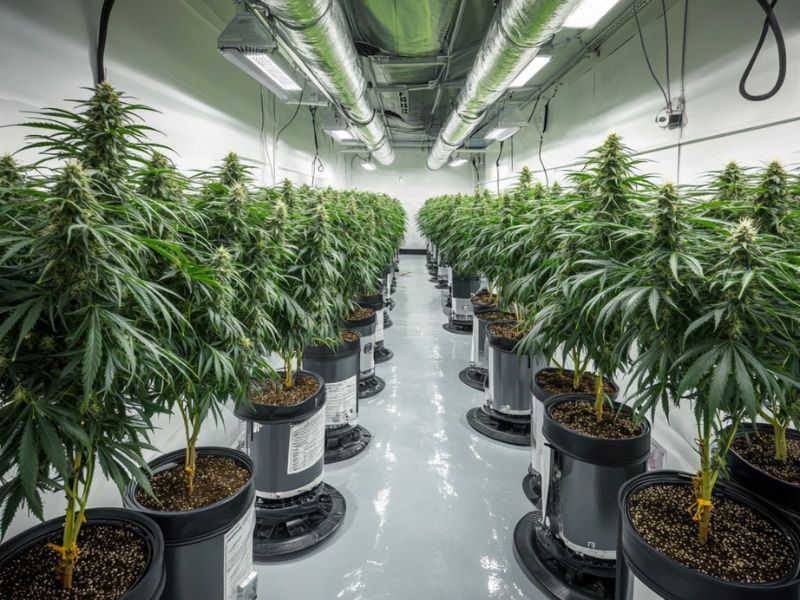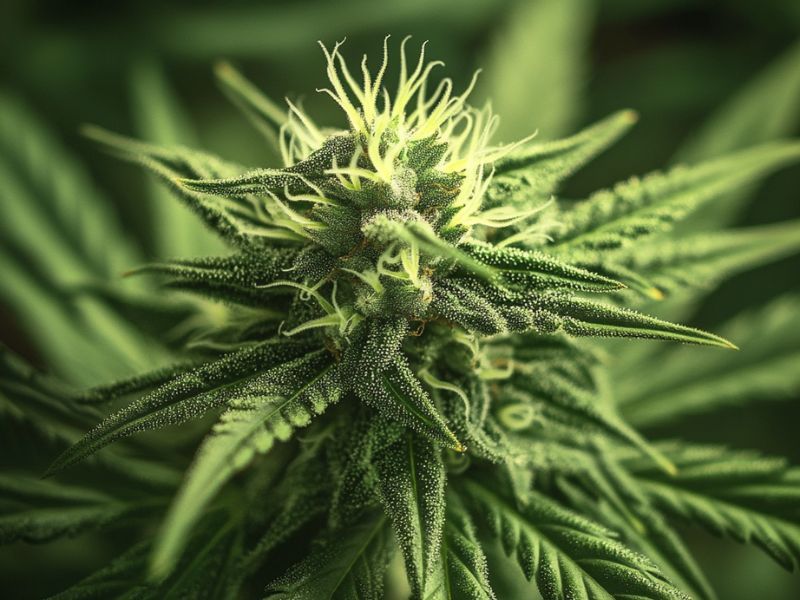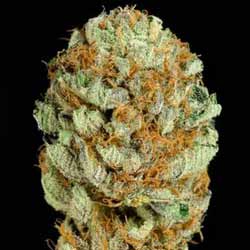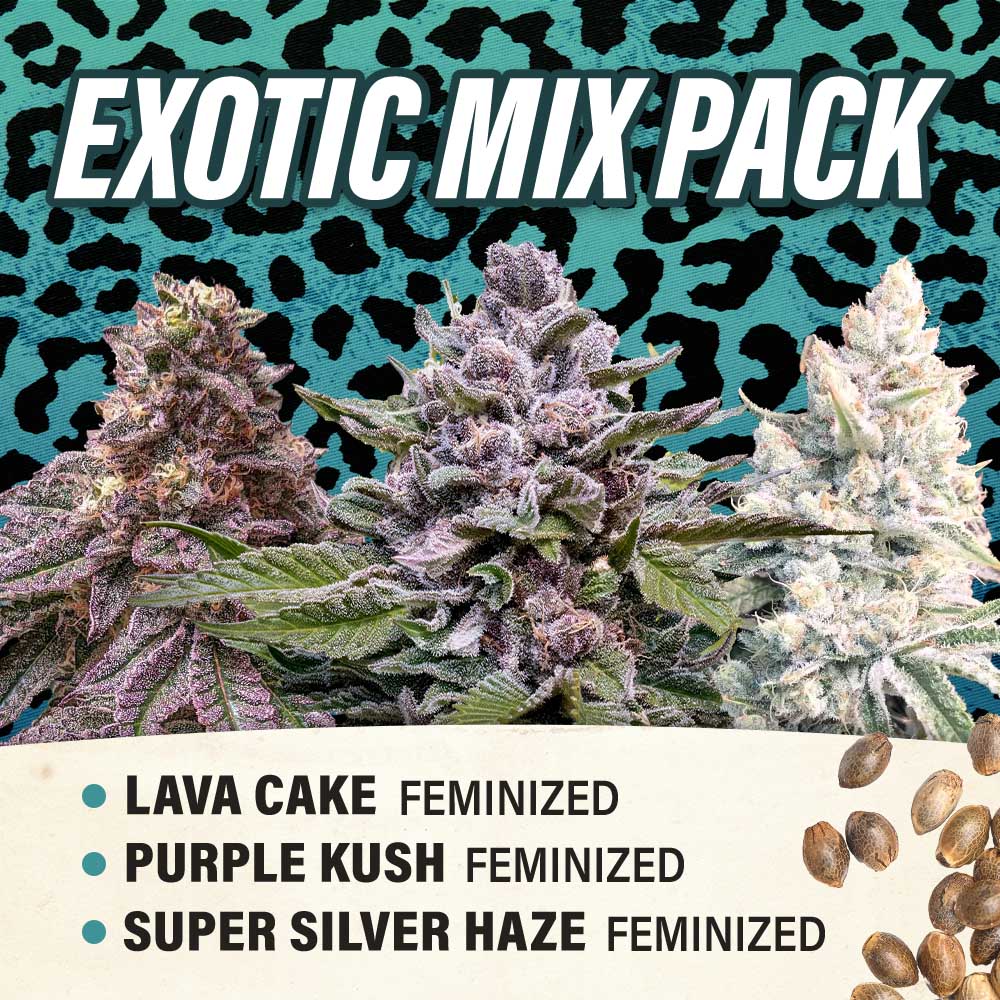Mold on Pot Plant: What to Do and 8 Prevention Tips
Noticed a strange white fuzz or spots on your cannabis plants? You’re not alone. Mold on pot plants is a common headache for many growers—especially in damp environments or during the flowering stage. Catching it early and knowing how to deal with it can save your crop and protect your health.
Table of Contents
How Mold Occurs on Cannabis Plants
Mold occurs on cannabis plants when excess moisture, poor air circulation, and warm, humid conditions create the perfect breeding ground for fungi. Mold spores naturally exist in the air and can settle on marijuana plants, especially during the growing or drying process. If conditions are right, they quickly multiply, leading to issues like powdery mildew, bud rot, or grey mold—all of which can damage your crop and negatively impact consumer health.
Here’s how mold typically develops:
- High humidity levels in the grow room or outdoor garden
- Damp environments with poor airflow
- Wet buds or leaves, especially during the flowering stage
- Lack of drainage holes causing the soil to stay too wet
- Dead plant material or infected parts left on or near plants
- Contaminated tools, hands, or nearby moldy cannabis or other plants
Tips to Prevent Mold on Marijuana Plants
Preventing mold on marijuana plants starts with creating an environment where fungi can’t thrive. By being proactive throughout the growing season—indoors or outdoors—you can protect your crop and avoid the stress of mold infestations.
1. Control Humidity Levels
Keep humidity in check, especially during the flowering and drying time. Use a hygrometer to monitor levels—aim for 40–50% during flowering and even lower during drying. For indoor growers, invest in a dehumidifier or air purifiers to reduce airborne spores and harmful compounds.
2. Improve Air Circulation

Good airflow helps keep leaves and buds dry. Use oscillating fans to maintain constant air movement around your plants. Avoid overcrowding by pruning or spacing plants to promote ventilation between branches and throughout the grow room.
3. Water Carefully and Monitor Soil Moisture
Overwatering leads to wet conditions that invite mold, root rot, and mildew. Water only when the top inch of soil feels dry. Use well-draining soil with additives like peat moss and ensure pots have drainage holes to prevent excess moisture buildup.
4. Inspect Plants Regularly
Check your cannabis plants daily, especially during the early stages of flowering. Look for signs of mold growth, such as white powder, fuzzy patches, or browning buds. Remove infected parts immediately and dispose of them away from other plants.
5. Use Preventative Sprays
Apply foliar sprays like neem oil or organic antifungals to reduce the risk of spores taking hold. Compost tea can also be used as a natural treatment that boosts beneficial microbes on leaf surfaces. Avoid spraying during the hottest or most humid times of day.
6. Keep the Growing Area Clean
Remove dead plant material, fallen leaves, and debris from around your plants to discourage fungi. Sanitize tools regularly and avoid cross-contaminating from moldy cannabis or other plants. Cleanliness is key to good practices in both indoor and outdoor grows.
7. Choose Mold-Resistant Strains
Some cannabis strains are more resistant to mold than others, making them ideal for outdoor growers or those in humid climates. Look for strains bred for durability and mildew resistance when planning your garden.
8. Protect During the Drying and Storage Phases
After harvest time, dry buds in a dark, well-ventilated area with humidity around 45–50%. Avoid drying in a damp area or rushing the process. Once cured, store cannabis in airtight containers away from light and heat to prevent mold found on stored weed.
How to Remove Mold on Pot Plants
If you spot mold on your cannabis plants, it’s important to act quickly to limit the damage and protect the rest of your garden. Here’s how to handle mold infestations effectively:
- Isolate the Affected Plants: Move infected plants away from healthy ones to stop spores from spreading through the air.
- Trim Off Infected Parts: Use sterile scissors to remove moldy buds, leaves, or stems. Never try to salvage moldy cannabis—discard it safely.
- Apply Organic Fungicides: Use natural solutions like neem oil, baking soda spray, or hydrogen peroxide (diluted) to treat visible mold without harming the plant.
- Increase Airflow and Reduce Humidity: Use fans and dehumidifiers to dry out the area and create conditions that stop mold growth.
- Use a Foliar Spray: Treat the entire plant with a foliar spray to target any lingering spores, especially in the early stages of infection.
- Improve Soil Health: Add compost tea or beneficial insects to the soil to strengthen the root system and fight harmful microbes.
- Clean the Grow Area: Wipe down surfaces, replace contaminated materials, and sanitize tools to avoid reintroducing spores.
Final Thoughts

Mold is a serious threat to cannabis plants, but with the right practices, you can prevent, manage, and even eliminate it. Stay vigilant, follow good growing habits, and take action fast when mold issues arise. For more insights on plant health, cultivation techniques, and troubleshooting common issues, study additional growing guides and educational resources.
Frequently Asked Questions
What does mold look like on cannabis buds?
Mold can appear as fuzzy white, grey, or black growth on buds. It may also look like a white powder or dusty coating, especially in the case of powdery mildew. Bud rot often starts inside the bud and turns it brown, mushy, or crumbly.
Can I still use moldy cannabis?
No, consuming moldy cannabis is unsafe. It can release harmful compounds and spores that may irritate the lungs or cause serious health issues, especially for people with allergies or weakened immune systems.
Will mold spread to other plants?
Yes, mold spores can travel through the air and infect nearby cannabis or other plants. That’s why it’s important to remove infected parts quickly and improve airflow to stop the spread.
Is it safe to grow cannabis in a humid climate?
Yes, but you’ll need to take extra precautions. Outdoor growers should choose mold-resistant strains, avoid planting too close together, and monitor weather conditions. Indoor growers must control humidity and ensure proper ventilation.
How do I tell the difference between trichomes and mold?
Trichomes are tiny, crystal-like structures that sparkle under light and are sticky to the touch. Mold looks dull, fuzzy, or powdery and usually has a musty smell. A magnifying glass or microscope can help confirm the difference.
Related Posts
Marijuana Plant Stages: 6 Important Phases to Monitor
How Much Cannabis-does- Does One Plant Yield: 7 Growth Factors
Best Fertilizer for Outdoor Marijuana: 7 Choices for Yields
CATEGORIES
Best Selling Seeds











